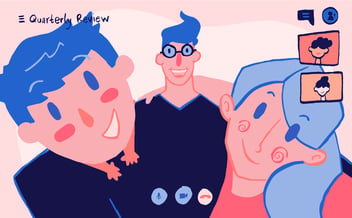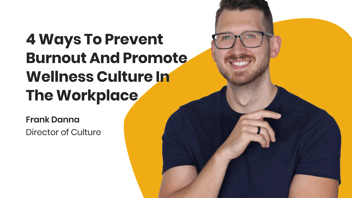
Every step counts.
For folks in every type of company around the world, Diversity and Inclusion (D&I) is becoming a topic that can no longer be ignored. For younger generations, the way companies respond to how people are treated will significantly influence the companies they choose to work with. From the outside looking in, D&I seems like Mt. Everest. How do you even begin tackling it?
At Softway, our calling is to bring humanity back to the workplace. We're here to confidently say that getting started in culture diversity and inclusion doesn't need to be complicated. You can begin implementing diverse and inclusive practices by the time you finish this article. You don't need a team formally stood up, policy changes in place, or a rigid "checklist" to meet a "quota."
Our company started our D&I efforts without even calling it D&I, or even realizing that we were addressing D&I at the time. Now, by offering unique and compelling digital D&I tools for companies of all sizes, we've seen the impact that a solid focus on Inclusion can have in any workplace. We've worked hard to make the very fabric of our business—our foundational culture as a company—that of love.
No, seriously. Love IS our business strategy. And you can't say you 'love' someone if you don't include them, right? Love guides and underpins every facet of our business—including building a culture that thrives on inclusion, equity, and belonging.
D&I issues are cultural issues
When it came to D&I—Softway started with our culture, not metrics.
It’s been proven, in our experience as digital transformation specialists, that compliance and reform alone are not sufficient enough, and do not produce lasting and positive effects.
For our organization, diversity and inclusion was—and is—a mission, not a chore. To that end we help companies understand that no amount of “diversity hires” or “checked boxes” will build a truly inclusive and diverse place of business.
It starts with your culture and the intent to build a healthy, vibrant place for people to work. If you’re treating D&I as a compliance issue, you’re not going to truly solve the problem or gain the benefits. D&I at it’s core is impacted through culture.
Breaking D&I Down
Diversity is another word for differences between people. Inclusion refers to the behaviors and social norms that ensure people’s voices are not just acknowledged—but heard.
Put another way; diversity means people are invited to the dance, Inclusion means they're not just there, they're dancing.
D&I in the workplace is the effort to bring different backgrounds, perspectives, and thinking (with equal say and returns) in strategy, outcomes, and problem-solving within an org. It is a competitive business advantage. It busts down the doors of groupthink. It allows people to think so far outside of the "box" that it unlocks innovation. It's proven to make companies more profitable and productive.
Up until this point, most organizations have looked at D&I as a chore, not as a mission.
It's bigger than race and gender
D&I is HUGE. All caps. It's not just the percentage of BIPOC (black, indigenous, people of color) folks or LGBTQIA+ (Lesbian, Gay, Bisexual, Pansexual, Transgender, Genderqueer, Queer, Intersexed, Agender, Asexual, and Ally) people you have on your team. It's about the diversity of thought and diversity of background of your team. Lived experiences from lives that don't look like yours matters more than ever, and studies have consistently shown that when teams are more diverse, and folks have a sense of real belonging—they perform better. The virtual workforce that's dealing with WIFI connectivity issues. Newly work-at-home caretakers that are balancing caring for toddlers and meeting the sales quota. All of those voices need to be present, at the table, and fairly engaged.
Our story should not be your story
There are many ways of incorporating diverse and inclusive practices in your organization. So many, in fact that there is no one size fits all approach. So if you're coming here looking for very objective, specific answers—you won't find any. But what you will find are practical examples of how we, as a business to employee solutions company, adapted and adopted Diversity and Inclusion directly into our culture, which informed how we operate and run our business.
That way, when you take a long, hard look at D&I in your company—you'll think subjectively about your people, your tools, and your processes and the culture that supports your strategy. Copying other people—other companies—won't work. Full stop. You must practice, fail, and practice again to find what works for your company, your people, and your future team members.
Below, you’ll find three ways we built D&I into our strategy of love. If you like what you see, try it in your environment with the help of this downloadable ebook.
#1 We changed how we hire
One of the things we noticed about the way we were hiring is that most of our project managers were hired from a fixed perspective. (Must have 3+ years as a project manager in technology). But as we began to care less about the formal experience on the resume and more about the personality traits and life experience—we started hiring all-stars. Very few of them had formal project management experience before joining Softway. What most companies would see as a risk, we saw as a competitive advantage. This shift in hiring brought us talented, diverse folks from backgrounds you'd never expect.
#2 We changed how we onboard
Gone are the days when new joiners wander the first week or two, foggy, freaked out, and feeling way in over their heads. Back in the day, our onboarding sucked because we didn't have a robust process—built with empathy—to bring people on in meaningful ways. So we scrapped it (which wasn't hard because it was non-existent). We developed an approach from a perspective of love by asking questions about the very nature of joining a new company: what makes us feel included? What would we have liked to see/hear/and feel on our first day at Softway?
Now, when people join us—they're welcomed with a computer preloaded with their info. They're already logged in. Calendars and meetings are set up. A basket with treats and personalized trinkets and goodies are on their desk. Handwritten notes are scattered throughout. Simple, thoughtful, practical steps were taken to make a good first impression—one that yields dividends in the long run. It turns out when people feel welcomed and included from day one, they're more engaged and locked into the vision of our company.
#3 We made food a big deal
Our food culture. It's a real thing. Food is a big deal at Softway. Breaking bread with each other (even virtually during this COVID-19 pandemic) brings us together in simple and profound ways. We have representation from every part of the world, and our potlucks represent that. So do our ordering tactics when bringing in food for a big event or small meeting. Halal, vegan, gluten-free—all things are considered, and deliciousness is never on the chopping block. At its core, food brings people together. We've found that food has a very profound impact on people feeling welcomed and included.
Bottom line: D&I isn't as scary as it seems
It doesn't take a manager, director, or leader to bring more diversity and Inclusion to your company. All it takes is for people like YOU to deeply care about making sure others feel like they're part of the conversation. That's a good place to start.
Why do y'all use the word LOVE again?
Ready to learn more about why we use the term "love as a business strategy"? We've got a podcast that tackles this radical way of thinking, and an episode devoted entirely to D&I from the perspective of love.
The podcast, titled "Love as a business strategy", is available for free on Apple Podcasts, Spotify, Google Podcasts, and all other podcast streaming providers. We release new episodes every Tuesday.





